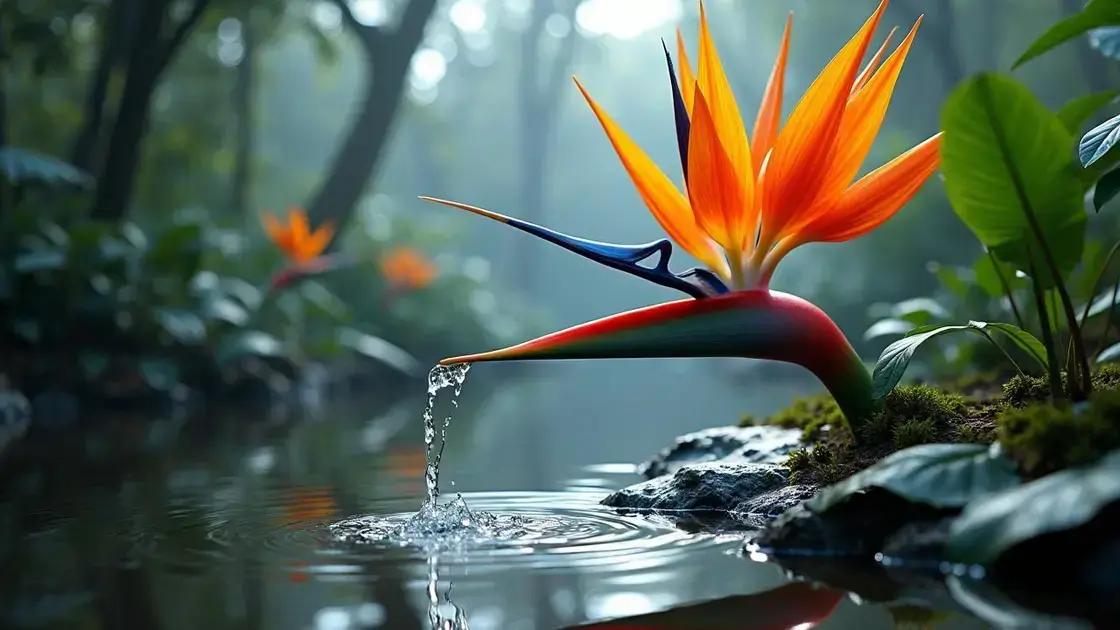How to take care of a birds of paradise plant is a vital question for anyone looking to bring vibrant life into their spaces. These stunning plants are known for their striking flowers and lush foliage. This guide walks you through essential care strategies, ensuring that your birds of paradise thrives and enchants your home.
Table of Contents
ToggleUnderstanding the sunlight needs of birds of paradise
Understanding the sunlight needs of birds of paradise is essential for their growth and vibrant blooms. These tropical plants thrive best when provided with optimal lighting conditions.
Light requirements for birds of paradise
Birds of paradise plants prefer bright, indirect sunlight. Here are some important points to consider:
- They can tolerate partial shade, especially in hotter climates.
- Direct sunlight for too long can scorch their leaves.
- Indoor plants need at least 4-6 hours of bright light daily for optimal growth.
Best locations for placement
When deciding where to place your birds of paradise, consider the following options:
- Near south-facing windows for maximum sunlight exposure.
- In bright rooms where sunlight filters through sheer curtains.
- Avoid dark corners or areas with heavy shade.
Signs of insufficient light
Pay attention to these signs that indicate your birds of paradise may not be getting enough light:
- Long, leggy stems as the plant stretches toward the light.
- Leaves turning yellow or dropping off.
- Lack of flowering or stunted growth.
If you’re interested in enhancing your indoor gardening skills, consider exploring indoor gardening techniques for better plant care.
Adjusting light exposure
To help your birds of paradise flourish:
- Rotate the pot regularly to ensure even light distribution.
- If possible, move the plant outside during warmer months for natural sunlight.
By understanding the sunlight needs of birds of paradise, you can ensure your plant remains healthy and vibrant, ready to showcase its exotic beauty in your home.
Watering techniques for a healthy birds of paradise plant

Watering techniques for a healthy birds of paradise plant are crucial to its overall health and blooming potential. This tropical gem requires specific care when it comes to hydration.
Understanding the watering needs
Birds of paradise thrive in well-drained soil, and proper watering techniques are key. Here are some critical points:
- Water when the top inch of soil feels dry.
- Use lukewarm water to avoid shocking the roots.
- Avoid letting the plant sit in water to prevent root rot.
Effective watering methods
Follow these guidelines to ensure your birds of paradise receives the right amount of moisture:
- Water deeply and evenly, allowing water to flow out of the drainage holes.
- Use a moisture meter to monitor soil moisture levels accurately.
- Consider humidity levels; during dry spells, mist the leaves or use a pebble tray.
Signs of overwatering or underwatering
Being alert to your plant’s indicators is vital. Here are signs that either overwatering or underwatering may be an issue:
- Overwatering can cause yellowing leaves and root rot.
- Underwatering can lead to wilted leaves and dry, crispy edges.
If you’re interested in improving your overall plant care, consider exploring indoor gardening techniques for better watering practices.
Watering schedule adjustments
During different seasons, your watering schedule may need to change:
- In spring and summer, water more frequently due to faster evaporation.
- In fall and winter, reduce watering as growth slows down.
By understanding effective watering techniques for a healthy birds of paradise plant, you can help your tropical beauty flourish and display its breathtaking blooms in your home.
Soil and fertilizing requirements for your bird of paradise
Soil and fertilizing requirements for your bird of paradise are essential for ensuring optimal growth and health. This stunning tropical plant flourishes in the right soil mix and with proper nutrients.
Choosing the right soil for birds of paradise
For your birds of paradise, consider the following soil characteristics:
- Well-draining soil mixture to prevent root rot.
- A mix that retains some moisture without becoming soggy.
- pH levels between 6.0 and 7.5 for optimal nutrient absorption.
Recommended soil mixtures
You can create an excellent soil blend by combining:
- 1 part potting soil
- 1 part perlite or coarse sand for drainage
- 1 part organic matter, like compost or peat moss, to provide nutrients
For more specific soil recipes, consider exploring indoor gardening techniques from experienced gardeners.
Fertilizing your bird of paradise plant
Proper fertilization is key to vibrant foliage and stunning blooms. Here are some guidelines:
- Use a balanced liquid fertilizer every 4-6 weeks during the growing season.
- Consider a fertilizer high in potassium to promote flowering.
- Reduce or stop fertilizing in fall and winter when growth slows.
Signs of nutrient deficiency
Monitor your bird of paradise for these signs to ensure it’s receiving adequate nutrients:
- Yellowing leaves, especially from the bottom up.
- Poor growth and sparse foliage.
- Reduced flowering or no blooms at all.
By understanding the soil and fertilizing requirements for your bird of paradise, you can cultivate a healthy and beautiful plant that enhances your home décor.
In conclusion
Caring for your birds of paradise involves understanding their specific needs for sunlight, watering, soil, and fertilization. By providing bright, indirect sunlight and implementing effective watering techniques, you can ensure their vibrant growth. Additionally, the right soil mixture and appropriate fertilizing schedule contribute to their overall health and stunning blooms. Remember to observe your plant for signs of stress to promptly adjust your care routine. For further tips on enhancing your indoor garden, consider visiting tips on enhancing your indoor garden.

